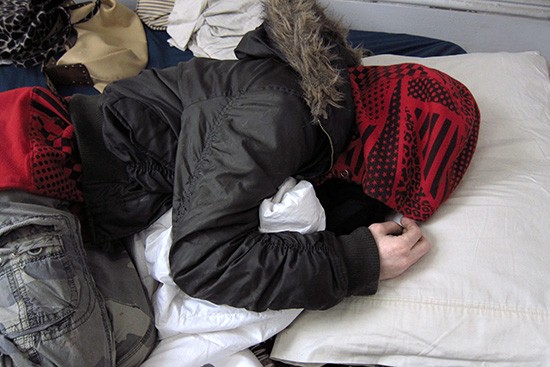There was something about Stephanie MacDonald that sparkled. Photographer Tony Fouhse can’t put his finger on what it is that led him to help her but since that day, their journey together has been one of honesty and courage. Since then MacDonald has kicked heroin.
Fouhse was working on a project called user when he met MacDonald in 2010. “I was on a strip of the sidewalk called ‘The Block’ in Ottawa,” says Fouhse. “It was mostly crack addicts, I guess.” Fouhse would go to The Block to collaborate with different addicts. He says he didn’t want to try and save or change them. He only wanted to take their photos and document their experiences. He did this on and off for four years until he met MacDonald. “I took her picture and I remember I said ‘whoa, you’re so intense, your eyes!’” says Fouhse.
Three years later the story of MacDonald’s recovery is being told through Fouhse’s photographic exhibit, Live Through This, at ViewPoint Gallery (1272 Barrington, to June 30). Live Through This shows not only the changes in MacDonald’s body as she begins to return to health but also the changes in her emotions.
Fouhse believes the most challenging part of his own journey was dealing with MacDonald—period. Fouhse and MacDonald collaborated on her portraits, taking a step away from the usual documentary photography.
“The flipside of her sparkle is that she’s the laziest, biggest whiner you’ve ever met in your life,” says Fouhse. MacDonald said that when she got dope sick she didn’t want to move, talk or do anything until she, “got that dope.”
“I know my work polarizes a lot of people. In some people it will reinforce a positive view or a negative view no matter what,” says Fouhse. “I also know that there are people in the middle saying that they’re never going to look at a crack addict the same ever again.”
Fouhse says that he’s not trying to convey anything specific from his work. “People map onto it what they want and I’ve learned that you can’t follow your work around and explain it to people and make them see it one way or another,” says Fouhse. “In fact, I’m not even sure I’d want to do that.”
Fouhse wants to take the pictures for himself, but also to show a different side of addiction. He believes that typically addicts are represented in very cliched ways—especially in news and television. Fouhse says that if you actually go and meet addicts, actually talk to them, you’ll see they’re not angels but they aren’t devils either. They’re just people.

